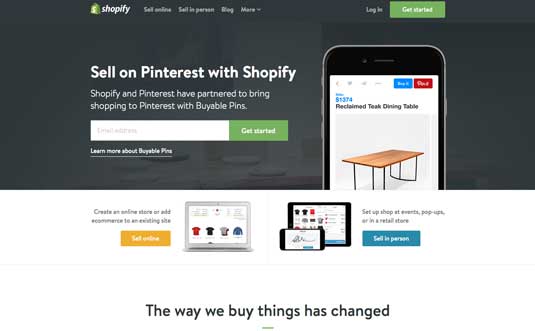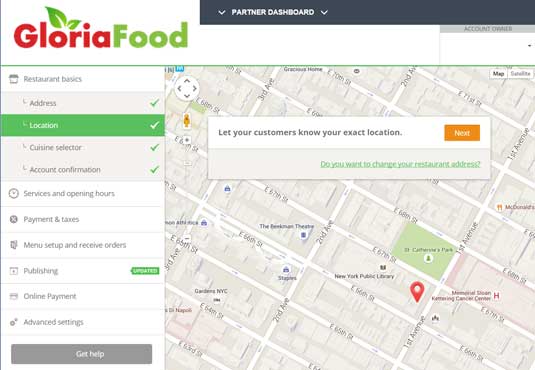How to set up an online shop in a day
Creative director Lance Evans reveals what you should know when creating your own online store.
As I started to explore the ways we designers could easily create online stores and other payment systems for our web clients, I found some of the same names popping up most frequently. These included Selz, Sellfy, Ecwid, and Shopify.
While each of these services are similar, each also has unique strengths and differences you need to be aware of. For example, some e-commerce vendors charge a flat rate per month, offering various scaled packages based on things like the number of items for sale that you have in your store. By contrast, the company ecwid currently offers a starter package that is absolutely free if you have 10 or fewer items in your store.
Other vendors operate differently. For example, Sellfy doesn't charge any monthly fee, and instead will take its cut when a product is sold. Such a business model makes the cost of entry more affordable to startup entrepreneurs on a shoestring.

Some e-commerce vendors include the actual merchant account services as part of their package. This is the credit card/payment part of the system, separate from the shopping cart. Shopify is one such company, with their "Shopify Payments" for your online sales, or their point-of-sale "Shopify POS" offering.
A company that includes the merchant services makes things easier for everyone. However, it also means you are locked into their rates. Other e-commerce services like ecwid and Sellfy actually use third-party merchant account services for financial transactions. This gives the client and designer/developer the option to choose between various online credit card merchants. The most popular ones seem to be Stripe and Paypal, but there are many others.
Keep in mind that if a third-party merchant bank is used, then they have to be paid in addition to your e-commerce vendor. It's likely that different types of businesses will see specific pros and cons using different vendor combinations.

For example, a dealer in expensive items might keep more of their revenue by simply paying a flat monthly fee, rather than sharing a percentage of their monthly sales. Conversely, someone selling low priced and low volume digital-download items might find a different payment model better fit their needs. (If this is you, be sure to check out Sellfy.)
Daily design news, reviews, how-tos and more, as picked by the editors.
No code required
I'd like to tell you that "setting up a store couldn't be easier". But it still requires making your way through the set-up interfaces of the often less-than-ergonomic vendor interfaces. But at least it no longer requires coding.
As Wordpress is perhaps the most popular platform, many vendors have developed plugins for integration into its system. However even if no plugin exists, integration is often just a matter of dropping a snippet of HTML code in the right place.
On the Adobe Muse side, yet another third party has come to help out. Muse-Themes is one of the best third-party support companies for all things Muse. They make a wide range of beautiful Muse website templates, and have a knockout list of Muse widgets. Among the offering are two e-commerce widgets. One that streamlines the integration of Sellfy, and another for ecwid.
Last but not least is a very specialized e-commerce service designed for the restaurant industry. Gloria Food makes an e-commerce vendor system for take-out food restaurants wishing to create their own online ordering delivery system. I can speak from personal use of the system, and tell you the interface is wonderfully simple to use. In-putting menu items was truly the most time intensive part. Their consumer interface is great, and their dev team keeps expanding their offerings.

The bottom line
It's time to jump into creating e-commerce sites for your clients. Low cost and ease of use makes this a must-have offering on your list of can-dos.
Words: Lance Evans
Lance Evans is creative director of Graphlink Media.
Like this? Read these!
- The designer's guide to working from home
- How to build an app: try these great tutorials
- Free graphic design software available to you right now!

The Creative Bloq team is made up of a group of art and design enthusiasts, and has changed and evolved since Creative Bloq began back in 2012. The current website team consists of eight full-time members of staff: Editor Georgia Coggan, Deputy Editor Rosie Hilder, Ecommerce Editor Beren Neale, Senior News Editor Daniel Piper, Editor, Digital Art and 3D Ian Dean, Tech Reviews Editor Erlingur Einarsson, Ecommerce Writer Beth Nicholls and Staff Writer Natalie Fear, as well as a roster of freelancers from around the world. The ImagineFX magazine team also pitch in, ensuring that content from leading digital art publication ImagineFX is represented on Creative Bloq.
